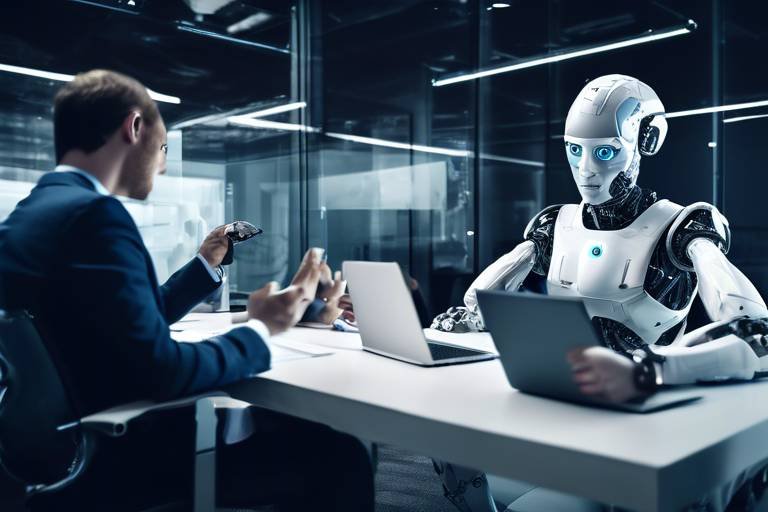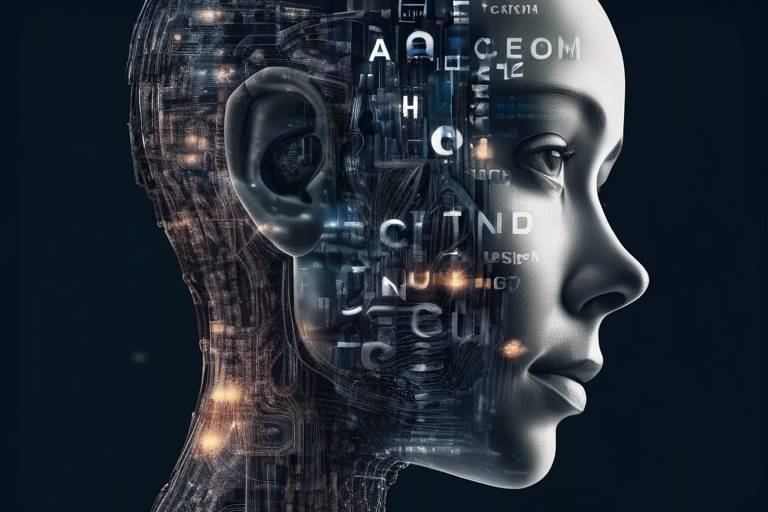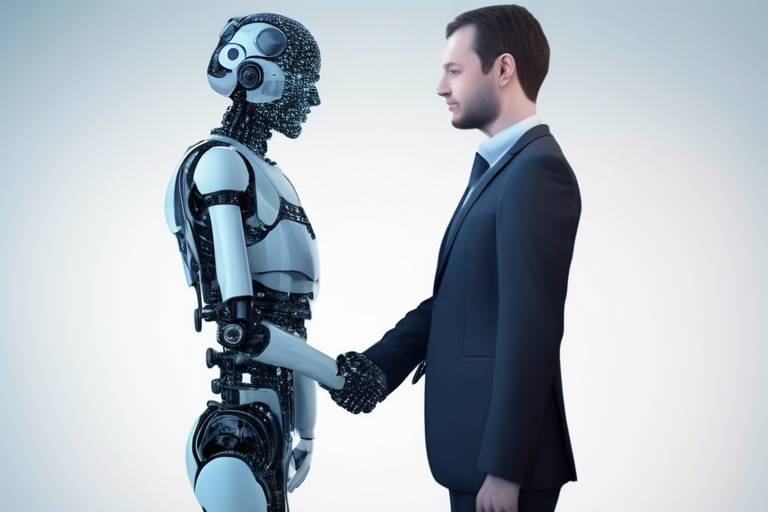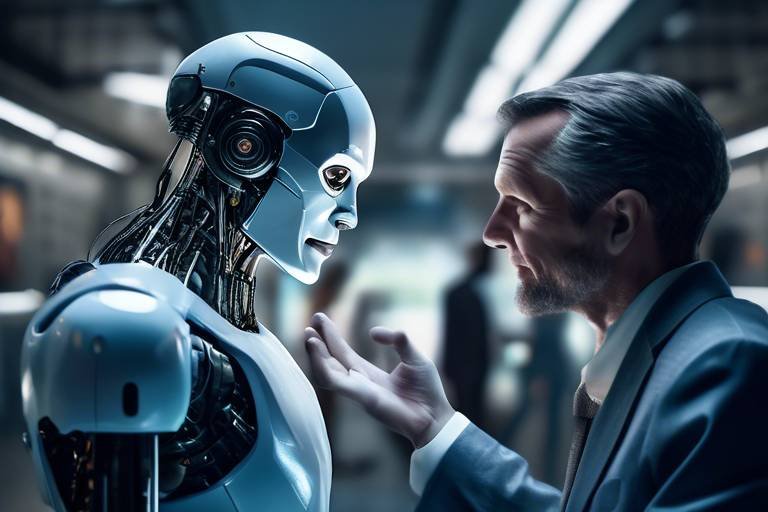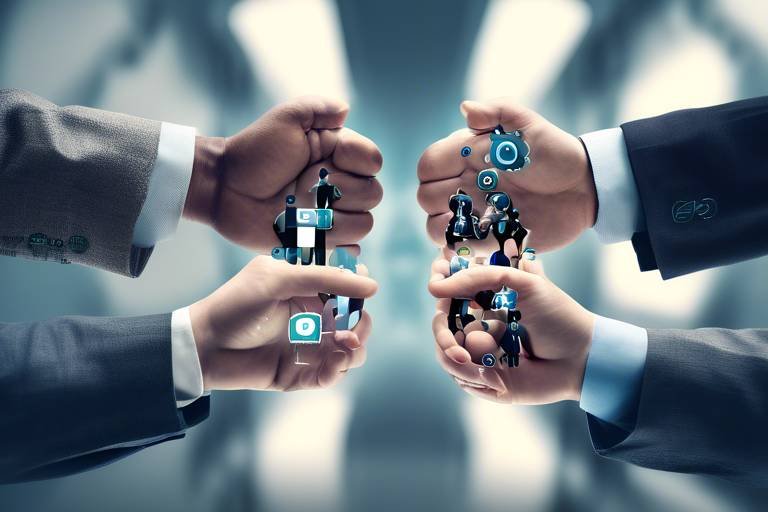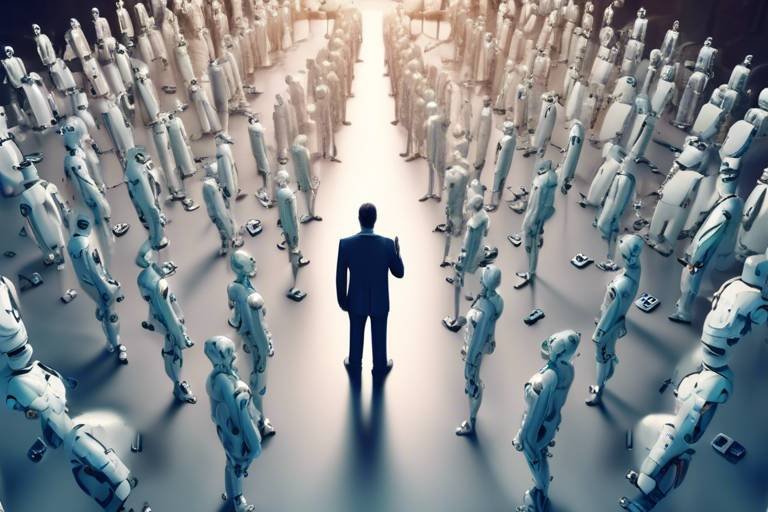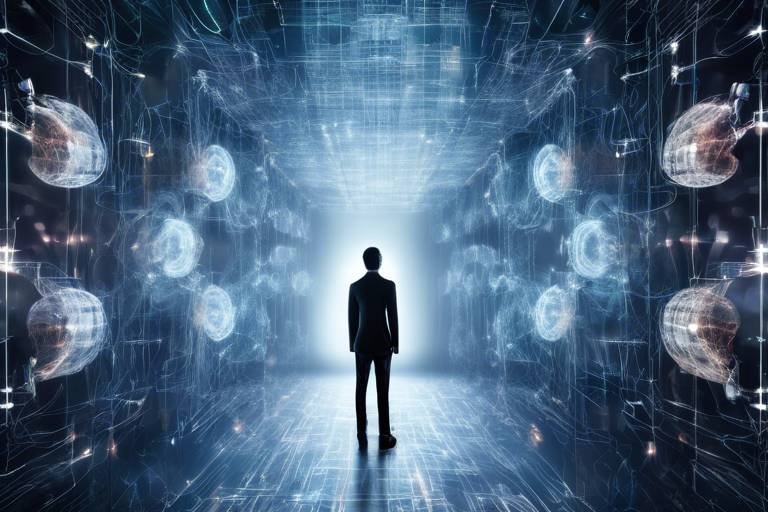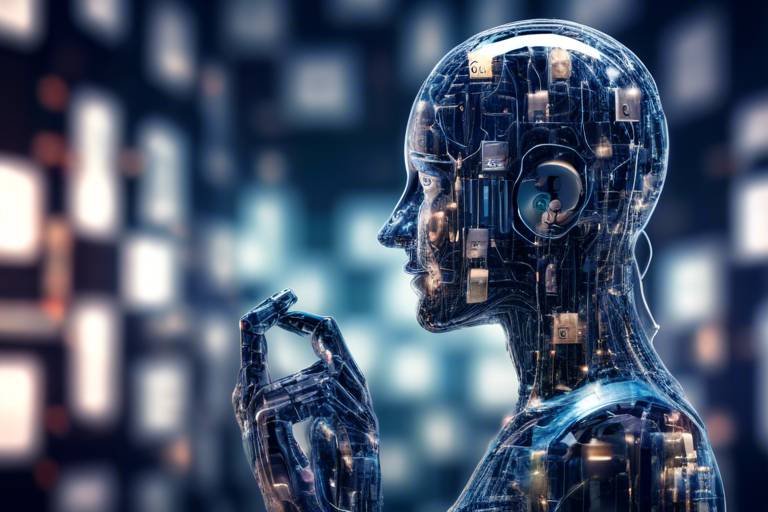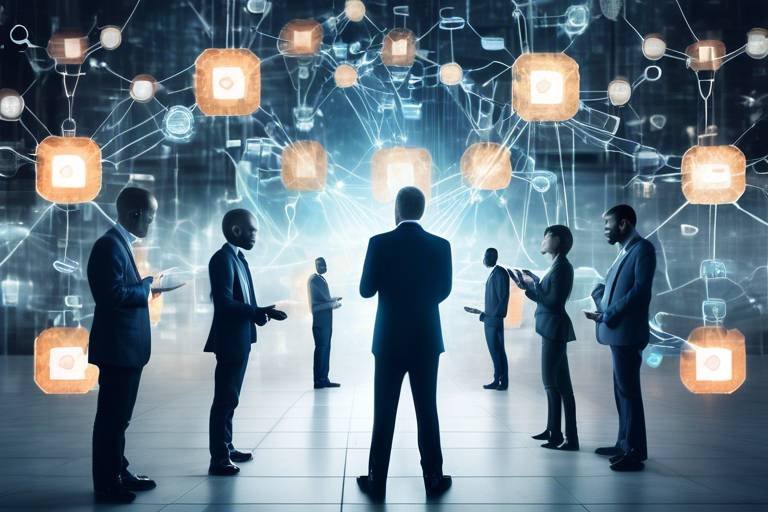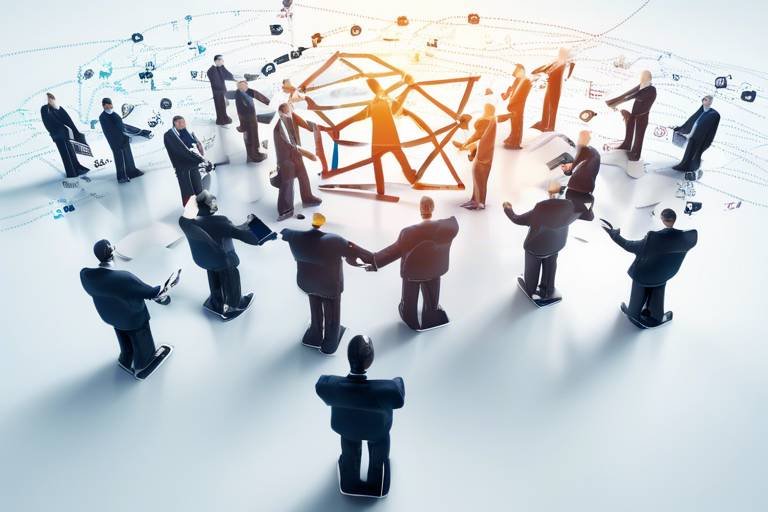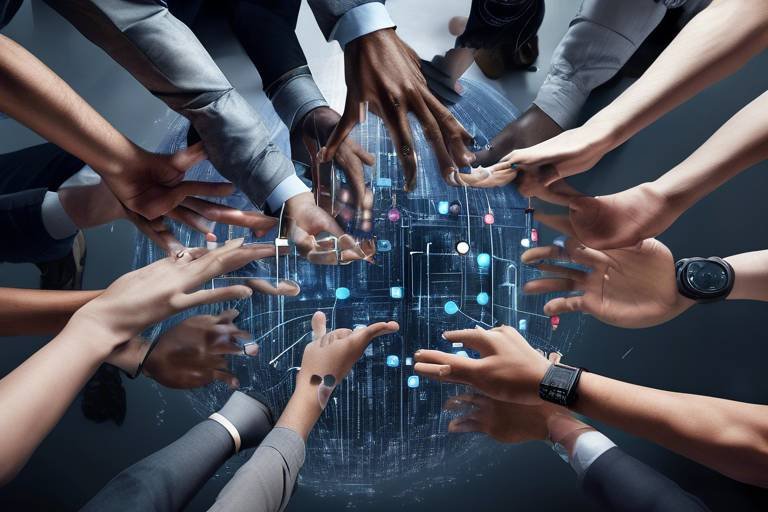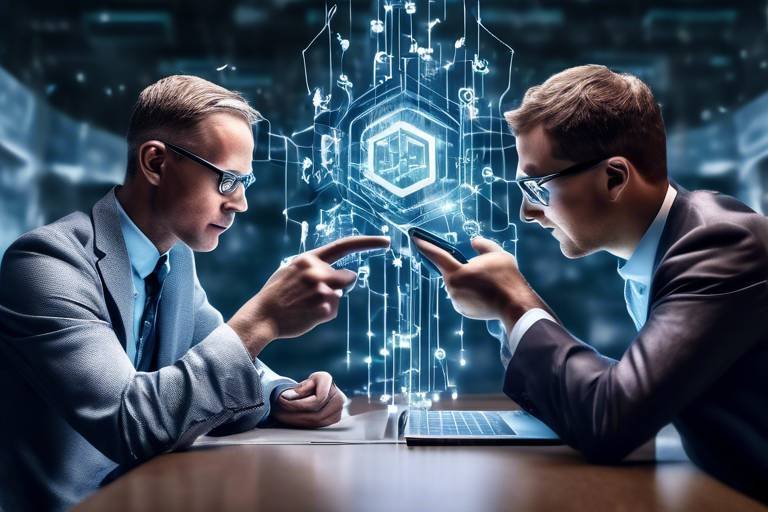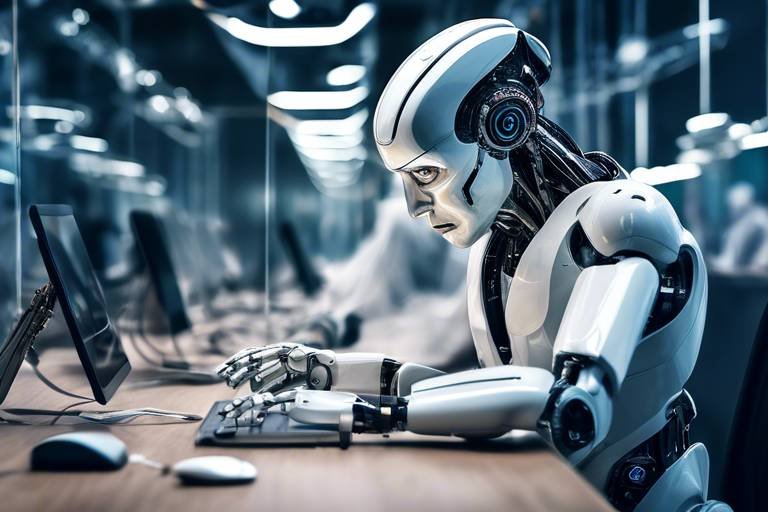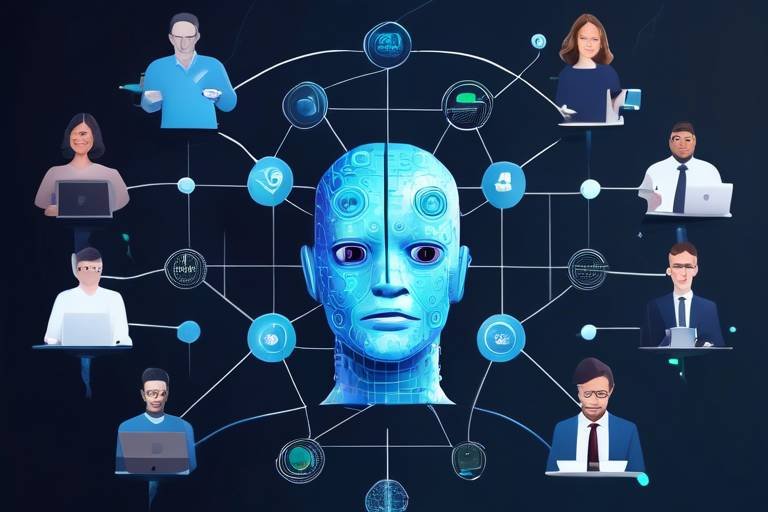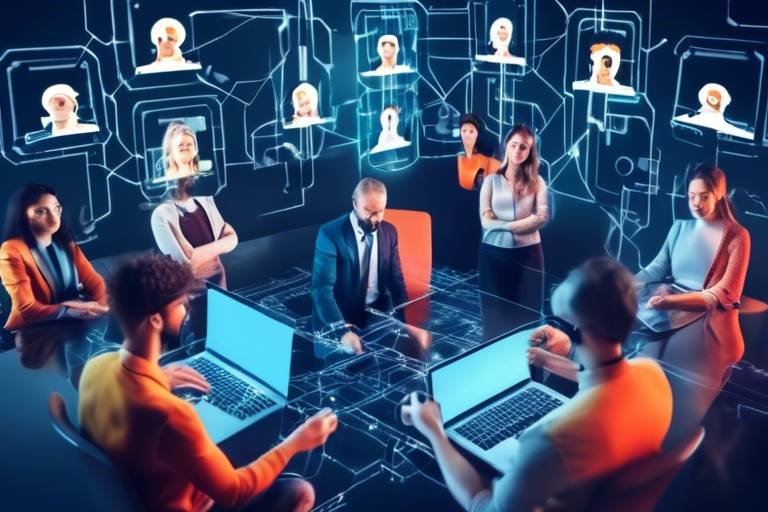AI and Human Collaboration: Changing the Face of Modern Workplaces
The workplace is undergoing a seismic shift, and at the heart of this transformation is the partnership between artificial intelligence (AI) and human workers. Gone are the days when AI was merely a futuristic concept; today, it is a powerful ally that is reshaping how we approach our jobs. Imagine walking into an office where mundane tasks are handled by intelligent systems, allowing you to unleash your creativity and focus on what truly matters. This collaboration is not just a trend; it is a revolution that is enhancing productivity, fostering innovation, and redefining roles across various industries.
As we delve deeper into this topic, it’s essential to recognize the profound impact AI has on workplace dynamics. From automating repetitive tasks to providing data-driven insights, AI is not here to replace humans but to complement their abilities. By embracing this technology, employees can leverage AI to enhance their skills and contribute more effectively to their organizations. It’s like having a supercharged assistant who never tires, always learns, and helps you make better decisions.
Moreover, the integration of AI into daily workflows is not just about efficiency; it's about creating a more engaging and satisfying work environment. Imagine a team where every member can focus on strategic thinking and creative problem-solving, while AI manages the heavy lifting of data analysis and routine tasks. This shift not only boosts morale but also leads to higher job satisfaction as employees feel empowered to contribute their unique talents.
However, this collaboration is not without its challenges. As we explore the benefits of AI-human partnership, we must also address the hurdles that come with it. Change can be intimidating, and resistance from employees is a common barrier that organizations must navigate. To foster a successful integration, companies need to communicate the value of AI clearly and provide training to ease concerns about job security.
In conclusion, the collaboration between AI and humans is not just changing the face of modern workplaces; it is revolutionizing how we work, think, and innovate. As we stand on the brink of this new era, it is crucial for organizations to embrace this partnership and prepare for a future where AI and human intelligence coexist harmoniously. Together, they can achieve remarkable feats that neither could accomplish alone.
- What is AI's role in the workplace? AI assists in automating repetitive tasks, providing data insights, and enhancing decision-making processes.
- Will AI replace human jobs? AI is designed to complement human abilities, allowing employees to focus on more strategic and creative tasks.
- How can companies ensure successful AI integration? Clear communication, employee training, and addressing concerns about job security are vital for successful integration.
- What are the ethical considerations of using AI? Organizations must navigate issues related to data privacy, bias, and accountability when implementing AI technologies.

The Rise of AI in Workplaces
In recent years, the integration of AI technologies into workplaces has not only become a trend but a necessity across various industries. From healthcare to finance, AI is revolutionizing the way we work, making processes faster, smarter, and more efficient. Companies are increasingly turning to AI to enhance their operational capabilities, leading to a significant shift in workplace dynamics. But what exactly is driving this rapid adoption? One major factor is the need for increased efficiency. As businesses strive to stay competitive in a fast-paced market, leveraging AI allows them to streamline operations and reduce costs.
Moreover, the capabilities of AI have expanded tremendously, thanks to advancements in machine learning, natural language processing, and data analytics. These technologies empower AI systems to learn from vast amounts of data, identify patterns, and make informed decisions. For instance, in the retail sector, AI is used to analyze consumer behavior, predict trends, and optimize inventory management, which ultimately leads to better customer satisfaction and increased sales.
Another driving force behind the rise of AI in workplaces is the growing demand for data-driven decision-making. Organizations are inundated with data, and AI helps in making sense of it all. By automating the data analysis process, AI tools can provide insights that were previously difficult to obtain, allowing companies to make strategic decisions quickly. This shift not only enhances productivity but also supports a culture of continuous improvement.
However, the rise of AI is not just about efficiency and data; it also involves a fundamental change in how we view work. Traditionally, human labor has been centered around repetitive tasks, but with AI taking over these duties, employees can now focus on more creative and strategic initiatives. This not only increases job satisfaction but also fosters a more innovative workplace culture. For example, instead of spending hours on data entry, employees can dedicate their time to brainstorming new ideas, solving complex problems, or engaging with customers.
As we embrace this transformation, it’s essential to recognize that the rise of AI is a collaborative journey. It’s not about replacing humans but rather enhancing human capabilities. The most successful organizations will be those that view AI as a partner in their quest for excellence. By understanding the dynamics of this collaboration, businesses can harness the full potential of AI, paving the way for a more productive and creative future.

The Benefits of AI-Human Collaboration
In today's fast-paced work environment, the collaboration between AI and humans is not just a trend; it's a revolution that is reshaping how we approach our daily tasks. Imagine a world where mundane tasks are handled by intelligent systems, allowing you to unleash your creativity and focus on what truly matters. This partnership is proving to be a game-changer, offering a plethora of benefits that enhance productivity, spark creativity, and improve decision-making processes.
One of the most significant advantages of AI-human collaboration is the dramatic boost in productivity. By automating repetitive and time-consuming tasks, AI tools enable employees to redirect their energies towards higher-value work. For instance, consider a marketing team that relies on AI to analyze consumer data and generate reports. This automation frees up team members to brainstorm innovative campaigns, leading to not just increased efficiency but also a more fulfilling work experience. Studies show that organizations that embrace AI in their workflows can see productivity increases of up to 40%!
Furthermore, AI can streamline workflows in ways that were previously unimaginable. When integrated into existing systems, AI helps to minimize bottlenecks and optimize processes. For example, a customer service department using AI chatbots can handle a high volume of inquiries without human intervention, allowing human representatives to focus on more complex issues that require a personal touch. This seamless integration leads to smoother operations and a more agile work environment, where teams can adapt quickly to changing demands.
Another remarkable aspect of this collaboration is the reduction of errors. AI's precision in data analysis and execution of tasks significantly diminishes the likelihood of human errors. When employees can trust that AI will handle data entry or scheduling with utmost accuracy, they can concentrate on strategic decisions and creative problem-solving. This not only results in more reliable outcomes but also fosters a culture of trust between employees and the technology they use.
Moreover, AI serves as a powerful ally in enhancing creativity. By analyzing vast amounts of data and trends, AI can provide insights that inspire human workers. Imagine a design team that uses AI to generate multiple design options based on user preferences. This collaboration can lead to innovative product development and a more dynamic creative process. When human intuition and AI's analytical prowess combine, the possibilities for innovation are limitless.
In summary, the collaboration between AI and humans is revolutionizing the workplace by:
- Boosting productivity by automating repetitive tasks.
- Streamlining workflows for smoother operations.
- Reducing errors and increasing trust in automated systems.
- Enhancing creativity by providing valuable insights and inspiration.
This partnership is not just about efficiency; it's about creating a work environment where human potential can truly flourish. As companies continue to adopt AI technologies, the benefits of this collaboration will undoubtedly become more pronounced, paving the way for a future where humans and machines work hand in hand to achieve remarkable outcomes.
Q1: Will AI replace human jobs?
A1: While AI may automate certain tasks, it is more likely to transform job roles, allowing humans to focus on higher-value work that requires creativity and critical thinking.
Q2: How can companies ensure a smooth integration of AI?
A2: Companies should invest in training programs to help employees understand and leverage AI tools, addressing concerns and fostering a culture of collaboration.
Q3: What are the ethical considerations of AI in the workplace?
A3: Organizations must consider data privacy, bias, and accountability when implementing AI, ensuring that their approach is responsible and transparent.

Boosting Productivity
In today's fast-paced work environment, productivity is king. With the integration of artificial intelligence (AI) into daily operations, businesses are witnessing a remarkable transformation in how work gets done. Imagine a world where tedious, repetitive tasks are handled by a machine, leaving you free to focus on what truly matters—your creativity and innovation. This is not just a fantasy; it's the reality many companies are embracing. By automating mundane tasks, AI allows employees to channel their energy into higher-value projects, leading to a significant boost in overall productivity.
Consider this: when employees are no longer bogged down by time-consuming activities, they can dedicate their skills and expertise to more strategic initiatives. For instance, instead of spending hours sifting through data, AI can analyze vast amounts of information in seconds, presenting insights that would take humans much longer to uncover. This shift not only increases efficiency but also enhances job satisfaction. Workers feel more engaged when they can contribute meaningfully to their organization’s goals, rather than getting lost in the minutiae of day-to-day operations.
Moreover, the benefits of AI in boosting productivity extend beyond mere task automation. By streamlining workflows, AI tools help to create a more organized and efficient work environment. For example, consider a marketing team that relies on AI to analyze customer behavior. With AI's ability to process data quickly, the team can receive real-time insights, enabling them to adjust their strategies on the fly. This agility is crucial in today’s competitive landscape, where being able to pivot quickly can mean the difference between success and failure.
To illustrate the impact of AI on productivity, let’s take a look at a few key areas where AI is making a difference:
- Task Automation: Repetitive tasks like data entry and scheduling can be automated, freeing up employees to focus on strategic initiatives.
- Enhanced Collaboration: AI tools facilitate better communication and collaboration among team members, leading to more cohesive project outcomes.
- Data-Driven Decisions: With AI’s ability to analyze data quickly, teams can make informed decisions faster than ever before.
In summary, the integration of AI into the workplace is a game-changer for productivity. By automating tedious tasks, streamlining workflows, and enabling data-driven decision-making, AI empowers employees to work smarter, not harder. This not only enhances individual job satisfaction but also drives organizational success. As we continue to embrace these advanced technologies, the potential for increased productivity is limitless, paving the way for a future where humans and AI collaborate seamlessly.
1. How does AI improve productivity in the workplace?
AI improves productivity by automating repetitive tasks, providing data-driven insights, and enhancing collaboration among team members.
2. Will AI replace human jobs?
While AI may automate certain tasks, it is more likely to augment human roles, allowing employees to focus on higher-value work that requires creativity and critical thinking.
3. What are some examples of AI tools that boost productivity?
Examples include project management software with AI capabilities, customer relationship management (CRM) systems, and data analytics tools that provide real-time insights.
4. How can organizations ensure a smooth transition to AI integration?
Organizations can ensure a smooth transition by providing training for employees, addressing concerns about job displacement, and fostering a culture of adaptability.

Streamlining Workflows
In today's fast-paced business environment, is more essential than ever. Companies are constantly seeking ways to enhance efficiency and productivity, and integrating AI into existing processes is a game-changer. By automating mundane tasks, AI allows human workers to focus on what truly matters—strategic thinking and creative problem-solving. Imagine having a virtual assistant that takes care of scheduling meetings, managing emails, and even analyzing data trends while you concentrate on crafting that innovative marketing strategy. It’s like having a personal aide that never tires!
One of the most significant advantages of incorporating AI into workflows is the ability to minimize bottlenecks. Traditional workflows often involve multiple steps, each dependent on the previous one, which can lead to delays and frustrations. However, with AI, processes can be streamlined in a way that enhances speed and accuracy. For instance, AI algorithms can analyze data in real-time, flagging potential issues before they escalate, thus ensuring a smoother operational flow.
Additionally, AI can provide valuable insights that help teams make informed decisions quickly. By leveraging data analytics, organizations can identify patterns and trends that might not be immediately apparent. This capability not only saves time but also empowers teams to pivot strategies based on data-driven insights. For example, a retail company might use AI to monitor customer purchasing habits, allowing them to adjust inventory and marketing strategies proactively.
Furthermore, the integration of AI technologies fosters a more agile work environment. Teams can collaborate seamlessly, sharing information and insights in real-time. This agility is crucial in a world where market demands can shift overnight. With AI handling routine tasks, employees can engage in more meaningful collaboration, brainstorming sessions, and creative endeavors, ultimately leading to a more dynamic workplace culture.
To illustrate the impact of AI on workflow efficiency, consider the following table that compares traditional workflows with AI-enhanced workflows:
| Aspect | Traditional Workflow | AI-Enhanced Workflow |
|---|---|---|
| Task Management | Manual tracking and updates | Automated task assignments and reminders |
| Data Analysis | Time-consuming manual analysis | Real-time data processing and insights |
| Collaboration | Fragmented communication | Integrated platforms for seamless interaction |
| Decision-Making | Intuition-based decisions | Data-driven decision-making |
In summary, streamlining workflows through AI integration not only enhances operational efficiency but also transforms the workplace into a hub of creativity and innovation. As organizations continue to embrace these technologies, the potential for growth and improvement becomes limitless. So, are you ready to let AI take the wheel on those tedious tasks and drive your team toward greater success?

Reducing Errors
In the fast-paced world of modern workplaces, the importance of accuracy cannot be overstated. Errors can lead to costly mistakes, tarnished reputations, and lost opportunities. This is where the magic of AI comes into play, acting as a reliable partner that significantly reduces the margin for error. By leveraging sophisticated algorithms and machine learning techniques, AI systems can analyze vast amounts of data with remarkable precision, identifying patterns and anomalies that would be nearly impossible for a human to detect in a timely manner.
Imagine you're a project manager juggling multiple tasks—overseeing budgets, timelines, and team performance. One small mistake, like miscalculating a budget or overlooking a deadline, can snowball into a major issue. With AI tools integrated into your workflow, you can automate data analysis and reporting, ensuring that every number is double-checked and every deadline is tracked. This not only minimizes human error but also frees you up to focus on strategic decision-making and creative problem-solving.
Furthermore, AI's ability to learn from past mistakes is a game-changer. As it processes more data, it becomes increasingly adept at recognizing potential pitfalls. For instance, if an AI system notices that a particular type of project frequently goes over budget due to specific factors, it can alert managers to these risks in real-time, allowing for proactive adjustments. This kind of predictive capability transforms the way teams approach projects, leading to more reliable outcomes.
Here’s a quick overview of how AI contributes to reducing errors in the workplace:
- Data Validation: AI can cross-reference data against multiple sources to ensure accuracy.
- Real-time Monitoring: Continuous oversight of processes helps catch errors as they occur.
- Predictive Analytics: Anticipates potential issues before they escalate into significant problems.
In essence, the integration of AI not only enhances the quality of work produced but also builds a culture of trust among employees. When workers see that AI can handle repetitive and error-prone tasks, they can focus on what truly matters—innovation and collaboration. The reliability of AI systems fosters confidence, allowing teams to push boundaries and explore new avenues without the constant fear of making critical mistakes. As we continue to embrace this technology, the landscape of workplace efficiency is set to evolve, paving the way for a more accurate and productive future.
Q: How does AI reduce errors in data entry?
A: AI systems can automate data entry processes, ensuring that information is accurately captured and cross-referenced, significantly reducing the likelihood of human error.
Q: Can AI help in identifying errors in ongoing projects?
A: Yes, AI can monitor project parameters in real-time, alerting teams to discrepancies and potential issues before they escalate.
Q: What industries benefit the most from AI error reduction?
A: Industries such as finance, healthcare, and manufacturing benefit greatly from AI's ability to minimize errors, as accuracy is critical in these fields.

Enhancing Creativity
In today’s fast-paced world, creativity is the lifeblood of innovation, and this is where the collaboration between AI and humans truly shines. Imagine a scenario where your best ideas are not just born from your own mind but are also shaped and refined by an intelligent partner that can process vast amounts of information in a heartbeat. This is the essence of AI enhancing creativity in the workplace. By leveraging AI, employees gain access to a treasure trove of insights that can spark new ideas and push the boundaries of conventional thinking.
AI tools can analyze trends, consumer preferences, and market dynamics, presenting this information in a way that is digestible and actionable. For instance, a marketing team could utilize AI analytics to gauge the effectiveness of a campaign and suggest modifications that could lead to greater engagement. This not only saves time but also opens the door to innovative solutions that might not have been considered otherwise. Think of AI as your brainstorming buddy, tirelessly working alongside you to enhance your creative potential.
Moreover, AI can assist in the creative process by generating ideas based on existing data. For example, AI-driven platforms can create content drafts, suggest design elements, or even compose music, providing a foundation that human creators can build upon. This kind of collaboration allows human workers to focus on the emotional and intuitive aspects of creativity while leaving the more analytical tasks to AI. The result? A powerful synergy that leads to groundbreaking products and services.
However, it’s important to remember that while AI can enhance creativity, it does not replace the human touch. The emotional intelligence, cultural understanding, and unique perspectives that humans bring to the table are irreplaceable. AI can provide the tools and data, but it’s the human spirit that breathes life into creative endeavors. This partnership between AI and humans fosters an environment where creativity can flourish, leading to innovative solutions that are both practical and imaginative.
In conclusion, the integration of AI into creative processes represents a significant shift in how we approach problem-solving and innovation. By embracing this collaboration, organizations can not only enhance creativity but also cultivate a culture that values and nurtures new ideas. So, the next time you find yourself stuck in a creative rut, consider how AI might help you break through those barriers and unlock your full creative potential.
- How does AI enhance creativity in the workplace? AI enhances creativity by providing insights, analyzing data, and generating ideas that human workers can refine and build upon.
- Can AI replace human creativity? No, AI cannot replace human creativity; it serves as a tool that complements and enhances the creative process.
- What are some examples of AI tools used for creativity? Examples include AI-driven content generation tools, design software, and music composition programs that assist human creators.
- How can organizations foster a culture of AI-human collaboration? Organizations can foster this culture by providing training, encouraging experimentation, and integrating AI tools into daily workflows.

Challenges of AI Integration
While the promise of AI integration in workplaces is enticing, it doesn't come without its fair share of challenges. The road to seamless collaboration between humans and AI can be bumpy, often marked by obstacles that organizations must navigate carefully. One of the most significant hurdles is employee resistance. Many workers may feel threatened by the introduction of AI technologies, fearing job displacement or a reduction in their roles. This apprehension can lead to a lack of enthusiasm or outright opposition to AI initiatives, making it crucial for organizations to engage in open dialogues about the benefits of AI and how it can complement rather than replace human effort.
Moreover, addressing these fears requires a thoughtful approach. Companies need to prioritize education and training programs that help employees understand AI's capabilities and limitations. When employees see AI as a tool that enhances their work rather than a competitor, they are more likely to embrace it. This shift in perspective can be achieved through workshops, hands-on training sessions, and transparent communication about the goals of AI integration.
Another challenge that organizations face is the ethical considerations surrounding AI use. As AI systems often rely on vast amounts of data, questions about data privacy, bias, and accountability arise. For instance, if an AI system makes biased decisions based on flawed data, it could lead to unfair treatment of employees or customers. Organizations must establish clear guidelines and frameworks to ensure that AI is used responsibly and ethically. This includes implementing measures to protect sensitive data, regularly auditing AI systems for bias, and fostering a culture of accountability where AI decisions are transparent and justifiable.
To tackle these challenges effectively, organizations can adopt a structured approach. Here’s a table summarizing key strategies for overcoming the challenges of AI integration:
| Challenge | Strategies |
|---|---|
| Employee Resistance |
|
| Ethical Considerations |
|
In conclusion, while the integration of AI into workplaces presents challenges, it also opens the door to new opportunities for growth and innovation. By addressing employee concerns and maintaining ethical standards, organizations can pave the way for a future where humans and AI work together harmoniously, enhancing productivity and creativity across the board.
Q: What are the main challenges of integrating AI into the workplace?
A: The main challenges include employee resistance due to fear of job displacement and ethical considerations surrounding data privacy and bias.
Q: How can organizations overcome employee resistance to AI?
A: Organizations can overcome resistance by providing education and training, encouraging open discussions about AI's benefits, and involving employees in the integration process.
Q: What ethical considerations should organizations keep in mind when using AI?
A: Organizations should focus on data protection, regularly auditing AI systems for bias, and ensuring transparency in AI decision-making processes.

Employee Resistance
When it comes to the integration of AI in the workplace, one of the most significant hurdles organizations face is . It's not just a minor bump in the road; it can feel like a massive wall that blocks progress. Many employees are understandably concerned about what AI means for their jobs. Will it replace them? Will their roles change to the point where they no longer recognize them? These fears can create a palpable tension in the workplace, making it crucial for leaders to address these concerns head-on.
Imagine walking into your office one day and finding out that a robot is now doing the job you’ve been doing for years. It’s a daunting thought, isn't it? Employees may feel threatened and undervalued, leading to a decline in morale and productivity. To combat these feelings, organizations must prioritize open communication. This means not only explaining how AI will be used but also actively involving employees in the transition process. By doing so, companies can help alleviate fears and foster a sense of ownership over the new tools being introduced.
Furthermore, it's essential to provide training and support to ease the transition. Employees should feel equipped to work alongside AI rather than being replaced by it. This can include workshops, one-on-one training sessions, or even mentorship programs that pair tech-savvy employees with those who may be struggling. By investing in their employees' skills, organizations can transform resistance into enthusiasm. After all, when employees see AI as a tool that enhances their work rather than a threat, the atmosphere can shift dramatically.
To further illustrate the impact of employee resistance, consider the following table that outlines common concerns and potential solutions:
| Employee Concerns | Potential Solutions |
|---|---|
| Fear of job loss | Transparent communication about AI's role and job evolution |
| Lack of understanding | Comprehensive training programs and resources |
| Feeling undervalued | Involve employees in the AI integration process |
| Resistance to change | Highlight success stories of AI enhancing jobs |
In conclusion, addressing employee resistance to AI is not merely a checkbox on a project plan; it’s a critical component of successful integration. By fostering an environment of trust, communication, and training, organizations can turn potential resistance into a collaborative spirit that embraces the future of work. The more employees feel like part of the journey, the more likely they are to support the changes that AI brings.
- What are the main fears employees have regarding AI? Employees often fear job displacement, lack of understanding of new technologies, and feeling undervalued in their roles.
- How can organizations alleviate these fears? Through transparent communication, training programs, and involving employees in the AI integration process.
- Is AI really a threat to jobs? While AI can automate certain tasks, it also creates opportunities for new roles and enhances existing jobs, allowing employees to focus on higher-value work.
- What role does communication play in AI integration? Open communication helps build trust, clarifies misunderstandings, and ensures that employees feel valued and informed about changes.

Ethical Considerations
As we venture deeper into the realm of AI integration in workplaces, it's imperative to address the that accompany this technological revolution. While AI promises to enhance productivity and creativity, it also raises significant questions about data privacy, bias, and accountability. Organizations must navigate these issues with care to ensure a responsible approach to AI implementation.
One of the primary concerns is data privacy. With AI systems often requiring vast amounts of data to function effectively, the potential for misuse or unauthorized access to sensitive information is heightened. Employees may feel uneasy about how their data is being used, leading to a lack of trust in the systems that are designed to assist them. Companies must establish clear policies regarding data collection and usage, ensuring transparency and security to alleviate these concerns.
Another critical aspect is bias in AI algorithms. If the data fed into AI systems is biased, the outcomes will also reflect those biases, potentially perpetuating existing inequalities in the workplace. For instance, if an AI recruiting tool is trained on historical hiring data that favors certain demographics, it may inadvertently discriminate against others. To combat this, organizations need to implement diverse training datasets and regularly audit their AI systems for fairness and equity.
Lastly, the question of accountability looms large in the AI landscape. When AI systems make decisions that impact employees or customers, who is responsible for those decisions? Is it the developers, the organization, or the AI itself? This ambiguity can lead to a lack of accountability, which is detrimental in a professional setting. Companies must create frameworks that clearly define responsibility and ensure that there are mechanisms in place to address any issues that arise from AI decision-making.
In summary, while AI holds immense potential to transform workplaces, it is crucial for organizations to approach its integration with a strong ethical framework. By prioritizing data privacy, addressing bias, and clarifying accountability, companies can foster a more responsible and equitable work environment. As we embrace this new era of AI, let's ensure that our ethical considerations keep pace with our technological advancements.
- What are the main ethical concerns regarding AI in the workplace?
The primary concerns include data privacy, algorithmic bias, and accountability for AI-driven decisions. - How can organizations address data privacy issues?
Organizations can implement clear data usage policies, ensure transparency, and invest in robust security measures. - What steps can be taken to mitigate bias in AI systems?
Companies should use diverse training datasets and regularly audit their AI tools for fairness. - Who is responsible for decisions made by AI?
Organizations should establish clear accountability frameworks to determine responsibility for AI-driven decisions.

The Future of Work with AI
The landscape of work is undergoing a profound transformation, and at the heart of this evolution is the collaboration between humans and artificial intelligence. As we look to the future, it’s clear that AI will not just be a tool, but a partner that complements human capabilities. Imagine a workplace where mundane tasks are handled by AI, freeing up creative minds to innovate and strategize. This shift is not just a possibility; it's already happening in various industries, paving the way for a new era of productivity and creativity.
In the coming years, we can expect several trends that will shape the future of work with AI:
- Increased Personalization: AI will enable businesses to offer highly personalized experiences to both employees and customers. From tailored training programs to customized marketing strategies, the ability to analyze vast amounts of data will lead to more effective outcomes.
- Greater Flexibility: The integration of AI will promote more flexible work arrangements. Employees will have the freedom to work remotely or in hybrid environments, supported by AI tools that facilitate collaboration regardless of location.
- Enhanced Decision-Making: AI will support decision-making processes by providing data-driven insights. This will empower employees at all levels to make informed choices quickly, driving efficiency and innovation.
Moreover, as AI technologies advance, we will see a shift in job roles. New positions will emerge that focus on managing and collaborating with AI systems. For instance, roles such as AI trainers, who will be responsible for teaching AI systems to better understand human nuances, or AI ethicists, who will ensure that AI implementations adhere to ethical standards, will become increasingly vital in the workforce.
However, this future is not without its challenges. Companies must invest in training and development to ensure that their workforce is equipped to work alongside AI. This involves not just technical skills but also fostering a culture of adaptability and continuous learning. Organizations that prioritize upskilling their employees will not only enhance their operational capabilities but also boost employee morale and loyalty.
As we embrace this future, it's essential to remember that the goal is not to replace humans with AI, but to create a synergistic relationship where both can thrive. The most successful organizations will be those that recognize the unique strengths of both humans and machines, leveraging each to achieve greater outcomes. In this collaborative environment, creativity will flourish, and innovation will become the norm.
As we navigate the future of work with AI, many questions arise. Here are some of the most frequently asked ones:
- Will AI take away jobs? While AI will automate certain tasks, it will also create new job opportunities, particularly in areas focused on AI management and ethics.
- How can companies prepare for AI integration? Companies should invest in training programs that equip employees with the skills needed to collaborate effectively with AI.
- What role will humans play in an AI-driven workplace? Humans will focus on strategic, creative, and interpersonal tasks, while AI handles repetitive and data-driven functions.
Frequently Asked Questions
- What is the role of AI in modern workplaces?
AI plays a transformative role in modern workplaces by enhancing efficiency, automating repetitive tasks, and providing valuable insights. This allows employees to focus on more complex and creative aspects of their jobs, ultimately reshaping productivity and collaboration.
- How does AI improve productivity in the workplace?
AI improves productivity by automating mundane tasks, which frees up employees to engage in higher-value work. This shift not only boosts overall productivity but also increases job satisfaction, as workers can dedicate their time to more meaningful projects.
- What are some benefits of AI-human collaboration?
Collaborating with AI offers numerous benefits, including enhanced creativity, streamlined workflows, and better decision-making. AI can generate ideas and insights that inspire human workers, fostering innovation and driving new product development.
- What challenges might organizations face when integrating AI?
Organizations may encounter several challenges when integrating AI, such as employee resistance due to fears of job displacement and ethical considerations regarding data privacy and bias. Addressing these concerns is essential for successful AI adoption.
- How can companies overcome employee resistance to AI?
To overcome employee resistance, companies should provide education and training about AI technologies, highlighting how these tools can enhance rather than replace human roles. Open communication about the benefits of AI can also help alleviate fears and build trust.
- What ethical considerations should be taken into account with AI?
Ethical considerations in AI usage include data privacy, potential biases in algorithms, and accountability for AI-driven decisions. Organizations must navigate these issues carefully to ensure responsible AI implementation and maintain employee trust.
- What does the future of work look like with AI?
The future of work with AI is expected to involve deeper collaboration between humans and AI technologies. As AI continues to evolve, it will likely play an even greater role in enhancing productivity, creativity, and decision-making processes across various industries.

